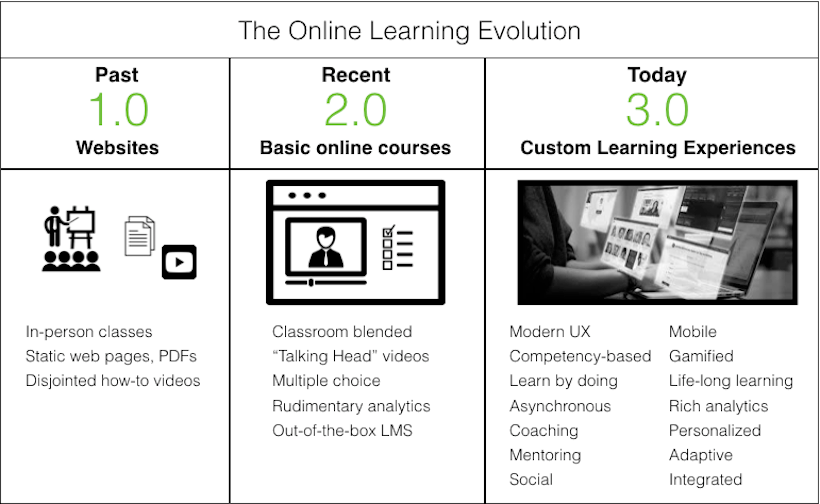E-Learning is an educational approach that utilizes digital technologies to facilitate learning. It is an effective way of delivering educational content, allowing learners to study from any location and at their own pace. With the rise of technology, eLearning is becoming increasingly popular in the educational sector. It is a multimedia-rich learning experience, enabling learners to gain knowledge and skills.
While E-learning offers the benefits of learning at your own pace, it also has disadvantages. For instance, factors such as limited peer interaction, disengagement, and lack of motivation in some cases can hinder the process of acquiring knowledge.
List of Disadvantages Of eLearning You Should Know About!
eLearning is a way of delivering content that allows for great flexibility and convenience for learners, but it also has its downsides. Here are 20 eLearning disadvantages you should know:

- Lack of Human Interaction: Without face-to-face interaction, it can be difficult for learners to form relationships with their peers and instructors, which limits collaboration.
- Limited Social Aspects: eLearning often lacks the social aspects of traditional learning, such as group discussions, team projects, and networking opportunities.
- Technical Issues: Technical issues like slow internet connections, outdated software, and insufficient hardware can impede the effectiveness of eLearning.
- Isolation: One of the e-learning disadvantages is isolation, as learners may not have the same social interaction with their teachers as they would in a traditional classroom setting. This lack of connection can lead to a decrease in motivation for the student, as they may not have the same level of engagement and support as they would in a physical classroom. Furthermore, this isolation can also lead to decreased collaboration, as students may not have the same opportunities to work together and learn from each other.
- Difficult to Measure Engagement: It can be challenging to measure the level of engagement with eLearning, as it can be difficult to assess how much learners actively participate in the course.
- Reduced Sense of Community: eLearning can create a feeling of seclusion for students, weakening a sense of community. This can be detrimental to students who are looking for a sense of connection with their teachers.
- Lack of Motivation: Without the structure of a physical classroom, learners may be less motivated to complete their eLearning course.
- Difficulty in Troubleshooting: It can be a challenge for those taking part in online classes to fix any problem they encounter since they may not be able to access a support team for assistance.
- Lack of Flexibility: Compared to traditional learning, eLearning may not provide the same degree of flexibility since amending the course can be challenging.
- Difficulty in Assessing Knowledge: Assessing knowledge in an eLearning environment can be difficult, as it can be hard to measure how much knowledge the learner has retained.
- Difficulty in Keeping Up: It can be difficult for learners to keep up with the pace of an eLearning course, as they may not be able to access the material quickly enough.
- Difficulty in Gauging Learner Progress: Measuring the progress of students engaged in an eLearning system can be quite challenging. Without directly interacting with the learners, it can be difficult to assess how much of the material they have comprehended.
- Lack of Instructor Availability: Traditional learning allows for more instructor availability, meaning that feedback can be provided immediately. In contrast, eLearning has certain e-learning disadvantages, such as not providing the same level of accessibility to instructors, thus potentially delaying the availability of feedback.
- Increased Distractions: Distractions can be more of a problem in eLearning than traditional learning since learners can use the internet for anything other than their course.
- Limited Accessibility: Not everyone may be able to benefit from eLearning due to a lack of technology or internet connection, rendering it inaccessible to certain learners.
- Lack of Communicative Skills: eLearning can limit the development of communicative skills, as learners may not have the opportunity to practice their verbal communication skills.
- Difficulty in Adapting to Different Learning Styles: Adapting to eLearning can be challenging, as it may not offer the same degree of personalization as traditional education. This can create difficulty in catering to individual learning styles.
- Difficulty in Assessing the Quality of Content: When it comes to e-learning, there are a few disadvantages that can make it a challenge to determine the quality of the content. One of these issues is the lack of feedback from the learners. Without the reviews of those taking the course, it cannot be easy to assess the effectiveness of the course material.
- Lack of Structure: ELearning’s drawbacks can be numerous compared to a traditional classroom setting, as the lack of structure can lead to less accountability and guidance. This eLearning disadvantage can be a hindrance to reaching educational goals.
- Cost: When it comes to e-learning disadvantages, one of the most notable things is the cost. While traditional learning does not demand any extra investment in technology or software, eLearning necessitates additional financial outlay.
Evolution Of E-Learning from Humble Beginnings To The Present Day

Initially, eLearning was used as a tool for employees to gain knowledge and skills through online courses, but its use has grown exponentially over the years. Today, it is estimated that more than 220 Million people are using eLearning for personal and professional development.
Early eLearning platforms were developed using simple HTML, which enabled the delivery of content and resources to learners. Over the years, technology has improved to allow for audio, video, and interactive elements, making eLearning much more engaging and interactive. This has also allowed creators to develop platforms that are accessible on mobile devices, making it even easier for learners to access the resources they need. In addition, integrating artificial intelligence and machine learning algorithms has made it possible to create personalized learning experiences and adaptive learning pathways.
Importance Of Interactivity in E-Learning
Interactivity is an essential element of online learning. It creates an engaging learning experience for students and helps to bridge the gap between the instructor and the learner. In addition, interactivity can be used to increase motivation and foster collaboration among students.
Although interactive activities can provide effective and personalized learning experiences, there are some e-learning disadvantages to consider. These include the lack of face-to-face interaction, which can limit the ability to get immediate feedback from an instructor, as well as a lack of social interaction with classmates.
Impact Of E-Learning On Traditional Classroom Education
E-learning is increasingly becoming the norm in the world of education, and its impact on traditional classroom education is significant. It allows students to take classes from anywhere in the world at any time. This flexibility allows students to learn at their own pace in an environment that suits their needs. For example, a student working full-time but wanting to pursue education can take online classes during their free time or as per convenience. In addition, students can quickly access course materials and resources online, allowing them to learn faster.

With the help of technology, teachers can provide interactive lessons and activities to their students, allowing them to interact with their peers and ask questions in real time. This provides a more engaging learning experience and allows teachers to get to know their students better. As a result, teachers can tailor their lessons and activities to meet their students’ needs better. However, despite the numerous advantages of e-learning, it is important to note that there are some e-learning disadvantages. These include the potential for technical difficulties, greater reliance on digital resources, and the use of inadequate or outdated content. As such, teachers and educators must ensure that any e-learning programs they choose are properly planned and executed to maximize the benefits and minimize risks such as poor attendance, lack of engagement, lack of clarity during learning, and miscommunication.
Final Thoughts
With its ability to provide flexible, personalized, and interactive learning experiences, eLearning is becoming increasingly popular in the education sector. However, you should also carefully consider e-learning disadvantages when deciding to pursue online learning.
Certain limitations must be considered, such as lack of human interaction, limited social aspects, and technical issues. However, despite these challenges, eLearning has improved the traditional classroom experience.
With the continued evolution of technology and its integration into eLearning, the future of education looks bright and offers numerous opportunities for learners to grow and succeed.





